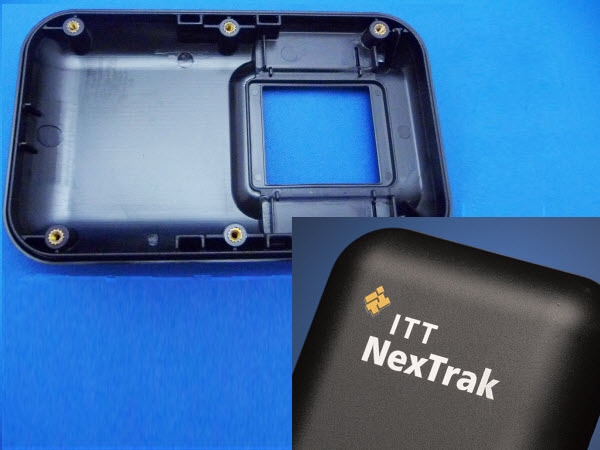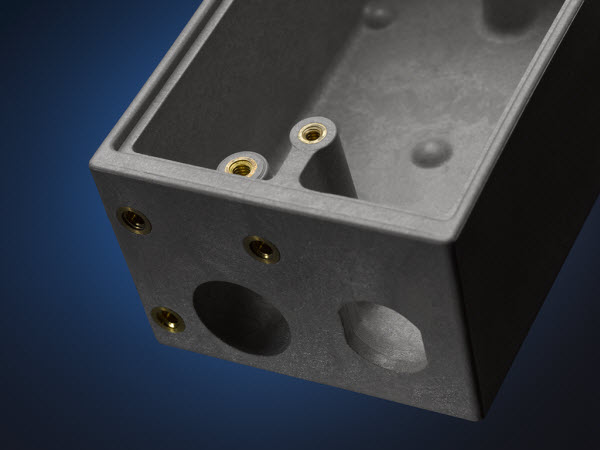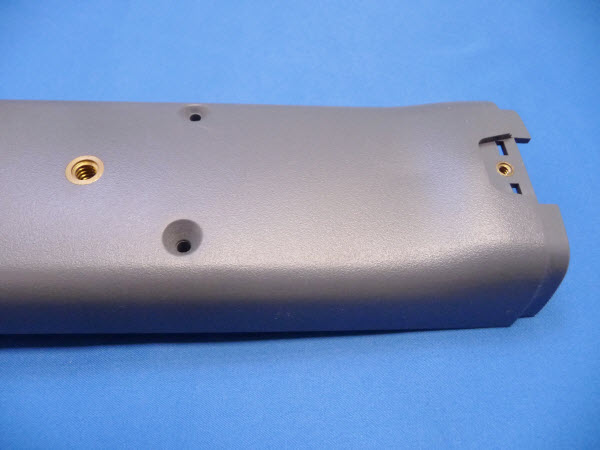In ultrasonic welding, high-frequency vibrations generate heat at the interface of the parts to be joined, melting the plastic  and creating a strong bond. The technique is fast, efficient, non-contaminating and requires no consumables. It produces a clean weld site with highly uniform joint quality, providing exceptional performance, consistency, and reliability. Easily integrated into automated systems, ultrasonic welding can be readily customized to fit exact specifications of welded parts. Ultrasonic welding is well suited for assembling parts with delicate internal electronic components and can be used for ultrasonic insertion, ultrasonic staking, stud welding, degating, or spot welding.
and creating a strong bond. The technique is fast, efficient, non-contaminating and requires no consumables. It produces a clean weld site with highly uniform joint quality, providing exceptional performance, consistency, and reliability. Easily integrated into automated systems, ultrasonic welding can be readily customized to fit exact specifications of welded parts. Ultrasonic welding is well suited for assembling parts with delicate internal electronic components and can be used for ultrasonic insertion, ultrasonic staking, stud welding, degating, or spot welding.
Ultrasonic  assembly is accomplished by converting high frequency electrical energy into high frequency mechanical motion. That mechanical motion, along with applied force, creates frictional heat at the plastic components’ mating surfaces (joint area) so the plastic material will melt and form a molecular bond between the parts. Standard 50 or 60 Hertz AC line voltage is supplied to the generator (power supply) and converted to 15,000 or 30,000 Hertz (i.e., 15 kHz or 30 kHz) AC electrical energy. This high frequency electrical energy is connected to a piezoelectric transducer (converter), which changes the electrical energy into mechanical vibrations. These vibrations, when applied to a part under force, will create frictional heat and cause the plastic to melt at the joint area. As the plastic cools, a homogeneous molecular bond is formed between the components.
assembly is accomplished by converting high frequency electrical energy into high frequency mechanical motion. That mechanical motion, along with applied force, creates frictional heat at the plastic components’ mating surfaces (joint area) so the plastic material will melt and form a molecular bond between the parts. Standard 50 or 60 Hertz AC line voltage is supplied to the generator (power supply) and converted to 15,000 or 30,000 Hertz (i.e., 15 kHz or 30 kHz) AC electrical energy. This high frequency electrical energy is connected to a piezoelectric transducer (converter), which changes the electrical energy into mechanical vibrations. These vibrations, when applied to a part under force, will create frictional heat and cause the plastic to melt at the joint area. As the plastic cools, a homogeneous molecular bond is formed between the components.
Ultrasonic welding is the most common application of ultrasonic assembly. In welding, the horn is brought into contact  with one of the workpieces, pressure is applied and vibrating ultrasonic energy travels through the material, generating frictional heat at the joint area between the two parts. The plastic material melts and flows between the two part surfaces. When the vibrations stop, the plastic solidifies and the two workpieces are bonded together.
with one of the workpieces, pressure is applied and vibrating ultrasonic energy travels through the material, generating frictional heat at the joint area between the two parts. The plastic material melts and flows between the two part surfaces. When the vibrations stop, the plastic solidifies and the two workpieces are bonded together.